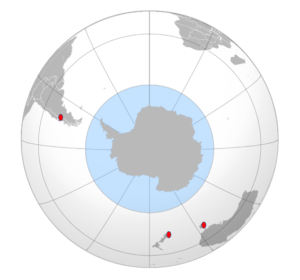by B. Van Vliet-Lanoë et J. Van Vliet, 27 août 2021, in ScienceClimat Energie
…
…
EN GUISE DE CONCLUSIONS
Les températures extrêmes observées en juin 2021 en Colombie britannique et dans le Nord-Ouest américain s’expliquent quantitativement et de manière classique par le gradient vertical de 9,8 K/km de l’adiabatique sèche, associé à une baisse d’altitude de 2 km, par l’intermédiaire d’un phénomène de foehn autocatalytique.Les concepts de « dôme de chaleur » et de Global Warming ne sont donc d’aucune utilité pour interpréter les observations.
De manière plus générale, le phénomène de foehn peut être déclenché par la présence de hautes pressions dans le voisinage d’une chaîne de montagnes. La chaîne des Montagnes Rocheuses est particulièrement sujette à ces phénomènes depuis la Colombie britannique jusqu’à la Californie, mais elle est loin d’être la seule, comme le montre le Tableau 13. Le vent de foehn chaud et sec favorise également les incendies de forêts.
La genèse des hautes pressions peut résulter du passage d’ondes planétaires, mais également du passage d’AMP en provenance du vortex polaire. Ce dernier est particulièrement renforcé lorsque le vent solaire – ou l’activité aurorale qui lui est équivalente – faiblit, comme c’est le cas entre la fin d’un cycle solaire et la montée de l’activité du cycle suivant (Schlamminger 1990). Ceci explique pourquoi les hautes pressions et les vagues de froid sont particulièrement intenses au début du cycle solaire, comme déjà observé entre 2009 et 2013, et comme attendu entre 2019 et 2023. Il est donc probable que les phénomènes extrêmes et les incendies de forêts se poursuivront dans les 2 ou 3 années qui viennent.
Enfin, les différents phénomènes physiques évoqués se situent non pas dans un contexte de réchauffement, mais bien dans un contexte de refroidissement global qui a démarré avec le 21ème siècle (van Vliet 2020) et que le printemps froid et l’été pluvieux de 2021 rendent particulièrement visible en Belgique, en France, en Angleterre et en Allemagne.
Dans cet article, une analyse quantitative simple nous a conduit à la conclusion que les températures extrêmes et les feux de forêt sont d’origine naturelle : l’homme n’y est donc pour rien, sauf pour la gestion de la couverture végétale et … l’allumage. Il est faux de juger l’homme coupable comme le font systématiquement l’ONU et le GIEC.
Oser prétendre que la transition énergétique améliorera cette situation relève d’une alliance contre nature entre le monde politique, le marketing insensé des énergies renouvelables et la propagande écologiste.



